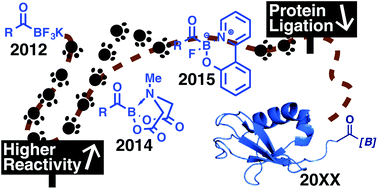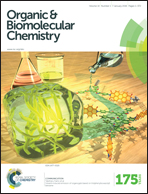Synthesis and reactivities of monofluoro acylboronates in chemoselective amide bond forming ligation with hydroxylamines
Abstract
The development of chemoselective reactions is a cornerstone of bioorganic chemistry and chemical ligation. Our contributions in this area include the development of two mechanistically distinct amide bond forming reactions, the α-ketoacid–hydroxylamine (KAHA) ligation for the chemical synthesis of proteins and the potassium acyltrifluoroborate (KAT) ligation for bioconjugation. The remarkable stability and unique reactivity of KATs with hydroxylamines prompted us to explore other acylborons as a ligation partner, which have been unappreciated in synthetic organic chemistry. A new convenient synthetic route was devised from KATs and suitable bidentate ligands, allowing for the preparation of a wide range of new acylboronates that retain one fluoride ligand on the boron. Our results established that a ligand on the boron is responsible for their reactivity and stability and provide a firm basis for further development of the acylboron–hydroxylamine amide bond forming ligation.


 Please wait while we load your content...
Please wait while we load your content...